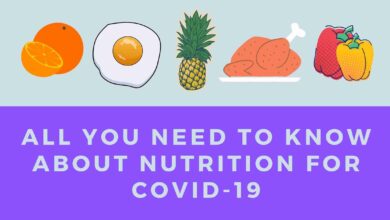Pyridoxine (Vitamin B6) is the next Vitamin among the B complex family.
Vitamins are crucial when it comes to the proper and effective functioning of the body. The two distinct vitamin family is water-soluble vitamins and fat-soluble vitamins,
On Loaded Health I have done discussing Vitamin A, Vitamin B1, Vitamin B2, Vitamin B3 as well as Vitamin B5. The next to be discussed is Pyridoxine (Vitamin B6).
Let’s start the discussion on Pyridoxine – Vitamin B6, its mechanism, sources, benefits, deficiency, diseases, and side effects.
This Article Contains
Pyridoxine Definition & Where It Comes From
Vitamin B6, also known as pyridoxine & pyridoxine hydrochloride (which is in the form of salt), is a water-soluble vitamin that may be found in many foods naturally as well as in meals and supplements.
The active coenzyme form, pyridoxal 5′ phosphate (PLP), is the most used marker of B6 blood levels in the body. PLP is a coenzyme that helps over 100 enzymes accomplish various functions, including protein, carbohydrate, and fat breakdown, homocysteine regulation (since high amounts can cause cardiac problems), and immunological and brain functioning.
Use of Vitamin B6
What is Vitamin B6 good for?
Pyridoxine is necessary for the body’s lipid, carbohydrates, and proteins to work properly. It’s also necessary for the brain, skin, nerves, and many other body parts to develop, grow and function properly.
Pyridoxine Sources / Vitamin B6 Foods
Pyridoxine requirement will be fulfilled if you eat a well-balanced diet and are unlikely to be deficient. Decent sources of Vitamin B6 include:
- Chickpeas = 1 cup: 1.1mg (65% Daily Value)
- Beef Liver = 3oz: 0.9mg (53% DV)
- Tuna = 3oz: 0.9 mg (53% DV)
- Salmon = 3oz: 0.6 mg (35% DV)
- Chicken Breast = 3oz: 0.5 mg (29% DV)
- Breakfast Cereals = 1 cup: 0.4 mg (25% DV)
- Potatoes = 1 cup: 0.4 mg (25% DV)
- Turkey = 3oz: 0.4 mg (25% DV)
- Banana = 1 medium: 0.4 mg (25% DV)
- Spaghetti Sauce = 1 cup: 0.4 mg (25% DV)
- Ground Beef = 3oz: 0.3 mg (18% DV)
- Waffle = 1: 0.3 mg (18% DV)
- Cottage Cheese = 1 cup: 0.2 mg (12% DV)
- Rice = 1 cup: 0.1 mg (6% DV)
Pyridoxine Functions
The major functions of vitamin b6 includes:
- Carbohydrate breakdown
- Protein and fats synthesis and breakdown
- Prevent allergies by synthesis of histamine
- Hemoglobin synthesis
- Preservation of nerve function
- Gene expression
- Synthesis of red blood cells
- Brain development
- Protect heart
- Immune support
- Prevent stress
Pyridoxine Dosage / B6 Daily Dose (RDA)
Harvard Health Publishing, recommended a daily dose of Pyridoxine as follows.
An average adult man requires 1.3 to 1.7 mg per day. For an average adult woman 1.3 to 1.5 mg per day.
Pyridoxine can be used in a variety of ways, so your doctor can prescribe the proper dosage for you. In-depth RDA includes:
- Newborn to 6 months age: 0.1mg
- 7 months to 12 months age: 0.3mg
- 1 year to 3 years of age: 0.5mg
- 4 years to 8 years of age: 0.6mg
- 9 years to 13 years of age: 1mg
- Above 13 years of age: 1.3mg – 1.7mg
- Pregnancy: 1.9mg
- Lactation: 2mg
Vitamin B6 pregnancy dose, as well as lactation, is higher than any other vitamin. As far as Vitamin B6 dosage for nerve pain is concerned 25-50 mg/day is recommended.
Vitamin B6 Supplement
Tablets forms are available in several strengths that is from 25mg to 500mg. Also, the extended-release tablets are available in 200mg.
B6 injections are also available for the prevention and treatment of Vitamin B6 deficiency and pellagra-like syndrome.
Health & Pyridoxine (B6)
VITAMIN B6 DURING PREGNANCY / B6 FOR MORNING SICKNESS
In the first several months of pregnancy, around half of all women have nausea and vomiting, with the remaining 50%–80% experiencing only nausea.
Although this illness is sometimes referred to as “morning sickness,” it can linger all day. Although the disease is not life-threatening and usually goes away after 12–20 weeks, the symptoms might cause a woman’s social and physical functioning to be disrupted.
Monotherapy with 10–25 mg of vitamin B6 three or four times a day is recommended to alleviate nausea and vomiting in pregnancy.
Besides pregnancy B6 is also great for treating morning sickness or nausea alone. The mechanism is still unknown.
VITAMIN B6 FOR PMS (Premenstrual Syndrome)
Premenstrual syndrome symptoms like breast soreness, depression, anxiety, and mood-related issues are said to be reduced by taking vitamin B6 supplements. Vitamin B6 position as a cofactor in neurotransmitter production may explain its possible usefulness in relieving PMS especially mood-related symptoms.
PYRIDOXINE IN TB (Tuberculosis)
The treatment regime in Tuberculosis is comprised of 4 drugs. Among which INH (isonicotinic acid hydrazide) tends to cause peripheral neuropathy and nerve-related issues. So, for that purpose, Pyridoxine is always used in all patients who have been started on antituberculous therapy. For that purpose recommended dose is 25-50 mg/day.
PRODUCTION OF NEUROTRANSMITTERS
Vitamin B6 assists in the production of neurotransmitters, which are chemical messengers in the brain. It also aids in the brain’s energy management. According to certain studies, vitamin B6 insufficiency is connected to cognitive deterioration and dementia.
Studies have revealed that old-aged persons with higher blood levels of vitamin B6 had improved memory. There is, however, limited evidence that supplementing with vitamin B6 improves cognition or mood in adults with or without dementia.
CARDIOVASCULAR DISEASES
Pyridoxin, when combined with folic acid (vitamin B9) and vitamin B12, was originally thought to protect the heart and blood vessels by lowering the amounts of an amino acid in the blood (homocysteine). However, taking these vitamins together does not appear to reduce the risk or severity of cardiovascular disease and stroke, according to research.
CANCER
Low plasma vitamin B6 concentrations have been linked to an increased risk of some cancers in several studies. A meta-analysis of prospective trials indicated that persons who consumed the highest quintile of vitamin B6 had a 20% lower risk of colorectal cancer than those who consumed the lowest quartile. The epidemiological research discovered that a high vitamin B6 food intake and greater B6 blood levels were linked to a lower risk of all cancers, particularly gastrointestinal cancers.
Deficiency of Vitamin B6 / Pyridoxine Deficiency
Deficiency of Vitamin B6 can occur if a person has poor intestinal absorption or is taking corticosteroids, estrogens, anticonvulsants, or some other drugs that lower the absorption of Vitamin b6.
Low levels of other B vitamins, such as vitamin B12 and folate, are often linked to vitamin B6 deficiency. Excessive alcohol intake over time, as well as hypothyroidism and diabetes, can lead to B6 deficiency.
The following are signs and symptoms of vitamin B6 deficiency includes:
- Numbness
- Tingling
- Dizziness
- Discomfort in the hands and feet
- Peripheral neuropathy
- Anemia
- Depression
- Nausea
- Seizures
- Confusion
- Declining immune system
- Fits
- Decrease appetite
- Delayed growth
- Can cause pellagra-like symptoms such as cheilosis (inflammation and cracking of the lips), seborrheic dermatitis, and glossitis (inflammation of the tongue).
Pyridoxine Side Effects
Here are some common side effects of Pyridoxine (Vitamin B6) include:
- Upset stomach
- Headache
- Inability to sleep
- Tingling and burning sensation
- Loss of appetite
- Nausea
- Sensory nerve damage
- Stomachache
- Vomiting
Frequently Asked Questions (FAQs)
WHICH IS BETTER VITAMIN B6 OR B12?
Vitamin B6 and 12 both belong to the same vitamin family as well as solubility so they are the same in many functions and differ in some. The comparison in which is better is not possible as the deficiency and RDA can’t be linked to one another.
SHOULD I TAKE PYRIDOXINE – B6 IN THE MORNING OR NIGHT?
Many nutritionists and studies agree that morning is best for multivitamins and said to do their best when taken in breakfast or lunchtime instead of dinner. But taking them at night is not contraindicated as well.
WHICH FRUIT IS THE RICHEST SOURCE OF VITAMIN B6?
Banana is the richest fruit source of Pyridoxine. It contains 0.4mg and 25% of RDA of B6. Followed by watermelon that contains only 6% of RDA.
WHAT IS PYRIDOXINE USE TO TREAT?
Pyridoxine is often used for the prevention of INH-induced peripheral neuropathy in TB and morning sickness in pregnancy instead of the treatment of some specific disease.
The Bottom Line
Too much Vitamin B6 or too little Pyridoxine can be problematic for your overall health. Thus, you must discuss with the clinician before starting taking the supplement and consuming natural richer sources instead. Furthermore, always take the recommended daily amount within RDI/RDA so that it would be safer for you.






